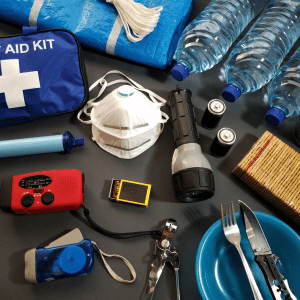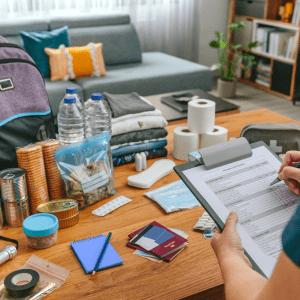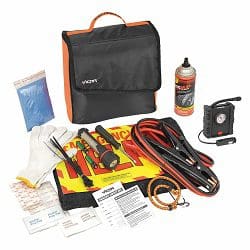HOME EMERGENCY KIT
A home disaster preparedness kit should include items you believe may be needed to keep your family safe and comfortable in an emergency. Keep your kit clearly labeled in a cool, dry place where it’s easily accessible when you need it at home or a shelter.
You will need to periodically go through your emergency supply kits to make sure the items in it are not outdated. Go through your supply kits at least every six months to check for food, batteries, and other items that may have expired.
To assemble your kit, store items in airtight plastic bags and put your entire disaster supplies kit in one or two easy-to-carry waterproof containers such as plastic bins or a duffel bag.

SPECIALTY ITEMS FOR YOUR HOME EMERGENCY KIT
Some families may have special needs or other items to consider for their emergency kits.
If you have infants, remember to pack enough formula, diapers, bottles, and pacifiers.
If you have children, consider adding books, toys, or games to help keep them occupied.
FOR OLDER ADULTS
Additional items to include in an emergency kit for older adults include:
FOR THOSE WITH PHYSICAL DISABILITIES
This checklist includes medical devices, assistive technology devices, and supplies for people with physical disabilities you may need for your personal emergency kit.
These items are to be considered in addition to the items listed above:
FOR THOSE WITH SPECIAL NEEDS
In addition to supplies needed for a general emergency, you may need to add several things to help yourself or loved ones with special needs.
to-go kit
If you need to leave your home immediately, be ready to go as quickly as possible. Having a “go bag” in an accessible ensures you and your family are prepared for any situation. Locations to store a go bag include under a bed, in a closet, or near a door.
Each member of your family should have their own go bag. The bag should be easy to carry. Consider also having a go bag at work.
Like a home emergency kit, go bags should be updated every six months.
Essential items to include in a go bag:

Other items to consider including in your go bag:
VEHICLE EMERGENCY KIT
Keeping an emergency kit in your vehicle can ensure you have crucial supplies available if you become stranded while driving or are unable to return home due to a disaster.
Items to include in a vehicle emergency kit:

During colder weather months, include the following:
PET EMERGENCY KIT
During an emergency, it’s important to have access to the things your pet needs to remain safe. Build a kit with your pet in mind, which should include many of the same items you would need for the human members of your family.
If local officials ask you to evacuate, that means your pet should evacuate too. If you leave your pets behind, they may end up lost, injured, or worse.
Pet kits should include the following:

SUBSCRIBE! It will only take a minute
Get updated every time we post something new!




